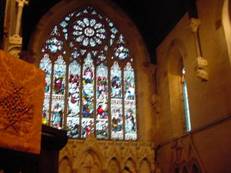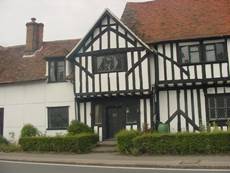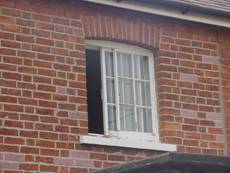Glass
 1stAssociated can provide help and advice with regard to building surveys, structural surveys, independent valuations, property surveys, structural reports, engineers reports, specific defects report, home buyers reports or any other property matters. As you can see from this article we use lots of sketches and photos in our reports as the feedback we have from our clients is that the sketches and photos help them understand the reports.
1stAssociated can provide help and advice with regard to building surveys, structural surveys, independent valuations, property surveys, structural reports, engineers reports, specific defects report, home buyers reports or any other property matters. As you can see from this article we use lots of sketches and photos in our reports as the feedback we have from our clients is that the sketches and photos help them understand the reports.
We, of course, like to meet you at the property during the survey and we are more than happy to talk to you about the reports.
Please free phone 0800 298 5424 for a friendly chat with one of our surveyors.
Free phone 0800 298 5424
Glass
The following article is on glass, glass is very important it helps you understand a building from its age recognising the glass (that is assuming the window is original) to if you see cracks in the glass the property may have movement. As Building Surveyors distortion of the windows and cracking in the glass is what we look for to see if there has been movement in the property. However we also appreciate that the glass may simply have cracked due to its age.
Cracks in my window
 So what do you do if you have cracks in your window? We would be more than happy if you wish to give us a call on free phone 0800 298 5424 for a friendly chat and we will try to advise you over the phone although often there is nothing like actually viewing the property due to the window in the glass needs to be looked at in the context of the whole building.
So what do you do if you have cracks in your window? We would be more than happy if you wish to give us a call on free phone 0800 298 5424 for a friendly chat and we will try to advise you over the phone although often there is nothing like actually viewing the property due to the window in the glass needs to be looked at in the context of the whole building.
What did the Romans ever do for us?
Glass
As with most things the Romans seem to have done it first! They are even credited with removing the greenness from glass by adding manganese oxide. As with most things Roman we then seem to have forgotten about it for thousands of years.
Glass you can hardly see through

Glass has come a long way since Roman times and is something that started with just letting light through; prior to this you had the option of nothing or wood/linen shutters.
At first it was only the very rich such as the church that had glass and we have even heard a rumour that the pin hinge that you have on some windows was so designed that when you moved house you could take the windows and glass with you however we cannot be certain if this is true or a myth!
What is certainly true is that glass from years ago was uneven and had different thicknesses and globules within it as well as impurities and a general frostiness or cloudiness could not be seen through compared to modern thin, clear glass.
 |
|
|
No glass in this window!
|
Older style window possibly originally without glass with glass added at a later date |
Broadsheet Glass
Think of a Tudor building
We have used many different methods to produce glass over the years probably the first that you will recognise is a Tudor window with its leaded lights. It is very likely that if you see a Tudor building still intact it will have broadsheet glass. Broadsheet glass was said to be first manufactured in Sussex in 1226 and popular until the late 16th century.
 |
 |
|
Tudor building with leaded lights
|
York window Crux frame building |
 |
 |
|
Old and new glass |
Older glass |
How is broadsheet glass produced?

Broadsheet glass is produced from a blown glass balloon which is chopped at both ends with the remaining glass cylinder being cut and flattened as best they could. It is said that the early Tudor windows had much if not more lead in the windows than glass which did stop viewing through the window.
Cylinder glass
Cylinder glass was also a blown glass but it was cut and then unrolled to produce a flatter plate of glass.
 Crown glass
Crown glass
Crown glass was the popular glass of the late 17th century although still not glass as we know it now as it was formed from a flattened disk of glass and was often uneven with thicker sections which were usually put into the window with a thicker end at the base.
Interestingly, it is said that this thicker glass at the base has fed the myth of glass windows that the glass in windows is not solid and moves.
Plate glass
Plate glass is said to have been first produced in 1773 in St Helens Lancashire and is the place where plate glass is credited to being first manufactured. Although we have also read that it is said to be a French invention! Plate glass was produced as quite a thick glass and polished and ground to make it more transparent.
Sheet glass
Sheet glass has been around since about 1838 which improved upon plate glass as it was thinner and more economical.
 Machine manufactured glass
Machine manufactured glass
Machine manufactured glass moved completely away from the traditional hand blown glass and is drawn through a cylinder and is polished and rolled giving a clear, thin glass.
Many would say that we have now lost the magic of the different textures and shimmers that we get in older glass.
Pilkington Glass
Pilkington glass developed float glass in 1957 which is now all but taken over.
 Some terms that you may hear relating windows and glass
Some terms that you may hear relating windows and glass
Margin Light Defined
Margin Light is a window with margins round the borders and you've got those cross corners, with perhaps a rosette or glory style in cut glass, or enamel glass, or acid edge glass.
Water Bar Defined
It runs between the wooden sill and the stone sill and as you know the sill is, the wooden sill is set down on plumber's putty, you've got a water bar so that the water doesn't work up like a reaction and get into the sill and rot it between the sill and the stone. It should be sealed with putty to stop that water getting in but it often isn't, that's the problem with window sills, the rainwater gets underneath and it rots upwards and you get damp, that's the logic. From, we suppose, the early Victorian era good quality work that had a water bar.
Transoms and mullions

Transoms are the horizontal timbers in windows and mullions are the vertical timbers.
Is it window sill or cill?
There is much debate as to how you spell the word sill or cill so you may find it spelt in different ways!
 Daylight robbery - Another window myth or is it?
Daylight robbery - Another window myth or is it?
It is probably a myth that daylight robbery came about from a Window Tax as the Window Tax of 1696 when those with above ten windows in a house paid tax with amendments until in 1825 to eight windows far below the Oxford English Dictionary's first mention of the term in 1949.
However we have heard accounts of how the blocked up windows or blind windows that you sometimes see in older properties have resulted from the tax on light which in turn has been said to be termed daylight robbery which we think is a lovely story even if not true!
 Interestingly we have also read that the Window Tax was helped to be abolished by the medical profession who argued that lack of windows tended to create dark, damp areas which were a source of disease and ill health.
Interestingly we have also read that the Window Tax was helped to be abolished by the medical profession who argued that lack of windows tended to create dark, damp areas which were a source of disease and ill health.
In 1851 the Act was finally replaced by the House Tax which many would say was just as controversial.
Please see our articles such as:-
Problems with roof windows, roof lights, sky lights and light tunnels
Windows and The Great Fire of London
Independent Surveyors
If you truly do want an independent expert opinion from a surveyor with regard to building surveys, structural surveys, structural reports, engineers reports, specific defects report, dilapidations or any other property matters please contact free phone 0800 298 5424 for a surveyor to give you a call back.
Independent commercial property surveyors
If you have a commercial property, be it leasehold or freehold, then you may wish to look at our Dilapidations Website at www.DilapsHelp.com and for Disputes go to our Disputes Help site www.DisputesHelp.com .
We hope you found the article of use and if you have any experiences that you feel should be added to this article that would benefit others, or you feel that some of the information that we have put is wrong then please do not hesitate to contact us (we are only human).
The contents of the website are for general information only and is not intended to be relied upon for specific or general decisions. Appropriate independent professional advice should be paid for before making such a decision.
All rights are reserved the contents of the website are not to be reproduced or transmitted in any form in whole or part without the express written permission of www.1stAssociated.co.uk
We would refer you to other interest articles on our website:
Cracking and Movement Information
Loft Conversions Do They Add Value?
My property has been repointed in a cement mortar, what can I do?
Rising damp, condensation and damp through your walls